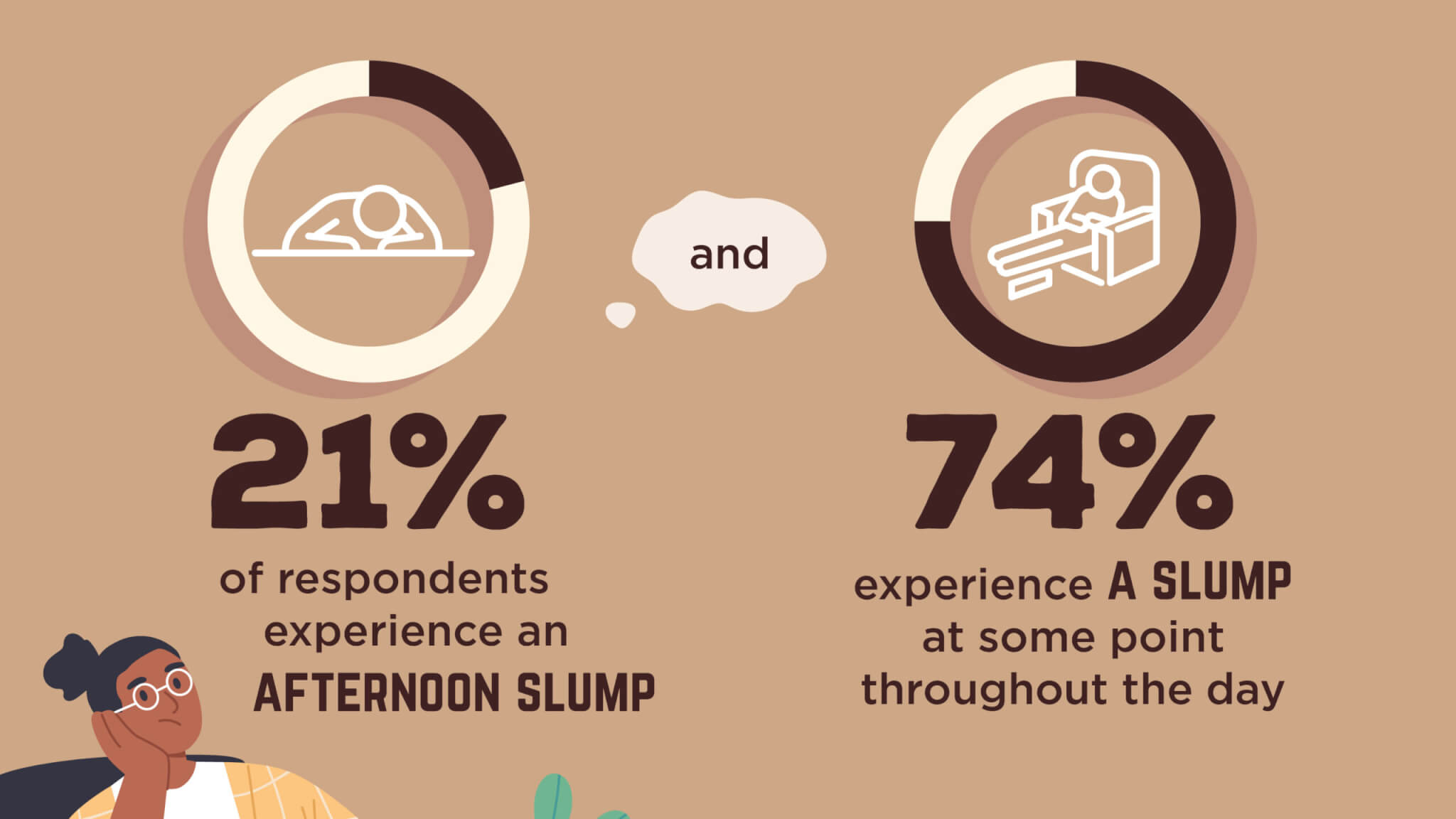NEW YORK — The average “afternoon slump” starts at 3 o’clock on the dot, according to new survey. For those who experience a loss of motivation or lack of energy in the afternoon, that afternoon slump will typically last almost 29 minutes.
Of those who experience an afternoon slump — 21 percent of the 2,000 Americans surveyed — half of them (49%) say there’s a specific day of the week when they’re more likely to experience an afternoon slump. For most, Tuesday seems to be the most common afternoon slump-inducing day for respondents.
Commissioned by Second Nature Snacks and conducted by OnePoll, the survey also looked at the causes of a “slump” (in the afternoon or otherwise), and the steps respondents take to regain their motivation once a slump starts.

For those who experience slumps (74%), the top cause was a lack of caffeine (56%), followed by boredom (53%) — with a lack of energy (53%) rounding out the top three reasons. A lack of food (51%) and a lack of sleep (41%) round out the top five causes for a slump.
Respondents should be extra mindful of preventing slumps during the holidays: over a third (37%) say the season (e.g., colder/darker days in winter) will increase their likelihood of experiencing a slump. They should be careful of their workday, too, as sitting in one place for too long (23%) and not taking a break for several hours (20%) also lead to slumps for respondents.
“As the afternoon slump sets in, it’s your body’s gentle reminder of the need to re-energize,” says spokesperson Jen Bauer, Chief Marketing Officer at Second Nature Snacks, in a statement.
The good news is that the majority (67%) of respondents think it’s easy to get out of a slump when it hits — and 74 percent use the same steps each time, to get themselves back to normal. This involves taking a walk (58%), eating a meal (55%), or exercising (49%). Respondents will also take a nap (47%) or eat a snack (45%).
Additionally, it takes less than 15 minutes for people to turn to food, to help them get out of a slump. The top food they turn to? Nuts or trail mix (56%), followed by pretzels (52%), chips (52%) and candy, other than chocolate (46%).
For those who eat nuts, peanuts (67%), walnuts (64%) and Brazil nuts (55%) were the top choice — and when it comes to trail mix, respondents want chocolate (63%), seeds (50%), and granola (48%) to be incorporated. Sixty-four percent of respondents say eating healthy foods keeps them motivated in the afternoon.
Not only that, but respondents also report a boost of energy (68%), feeling more optimistic (63%), and more productive (52%) after eating a healthy meal or snack in the afternoon.
“Afternoons are better with healthy snacks — they’re the antidote to afternoon slumps, providing the fuel your body needs to get through the busy day. Whether it’s the satisfying crunch of nuts or the sweetness of dried fruits or chocolate, trail mix is a tasty, nutrient-packed snack that provides a boost of antioxidants and plant protein, so you’ll be full and satiated any time you need a boost,” says spokesperson Ashley Wilson, Senior Associate Brand Manager at Second Nature Snacks.
Survey methodology:
This random double-opt-in survey of 2,000 general population Americans was commissioned by Second Nature Snacks between Nov. 7 and Nov. 8, 2023. It was conducted by market research company OnePoll, whose team members are members of the Market Research Society and have corporate membership to the American Association for Public Opinion Research (AAPOR) and the European Society for Opinion and Marketing Research (ESOMAR).

